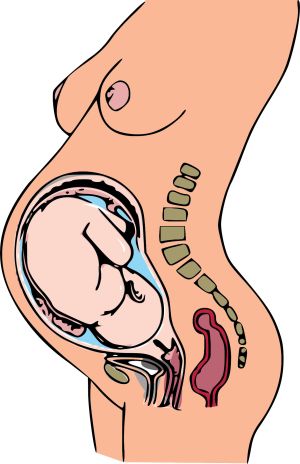Live-birth

Live-birth is the process by which offspring are brought into the world following internal fertilization. This form of reproduction is distinguished by the offspring's development within the parent's body, culminating in delivery through an orifice commonly referred to as the birth canal. For most Near-Human species, this structure is the vagina; however, other anatomical structures, such as cloaca or species-specific birth canals, are also observed across alien taxa.
Live-born offspring typically emerge with a degree of physical development that allows them to survive outside the parent's body without needing artificial environmental support or direct nutrient supplementation. However, the maturity and capabilities of live-born offspring vary widely between species, ranging from completely helpless and dependent to fully mobile and self-sufficient at birth.
Developmental Variations
Live-birth encompasses a vast spectrum of developmental outcomes, influenced by the evolutionary adaptations of each species. The maturity of the offspring at birth can vary significantly, as illustrated below:
Canid
Offspring of Canids are born highly immature. They are blind, their limbs lack coordination, and their primary survival mechanism is the instinct to suckle. It takes several weeks for Canid pups to gain sufficient motor control and sensory function to interact with their environment independently.
Valorèin
The Valorèin species are born slightly more advanced than Canids. Neonates are wide-eyed and capable of limited movement, such as rolling over. However, they lack the strength to hold up their heads or perform precise actions for the first ten days. Dexterity and locomotion develop slowly over the first month.
Lekaran
Unlike the Valorèin, the Lekaran are born highly mobile. Neonates can crawl and swim almost immediately, utilizing their strong hind limbs for propulsion. However, their arms are relatively weak at birth, and their iconic adult tentacles lack tactile control, requiring months to fully develop.
Grelian
Grelians are born robust and highly self-sufficient. Standing at 2–3 feet tall even as neonates, they possess limited mechanical dexterity almost immediately after birth, enabling them to manipulate simple objects and seek nourishment on their own.
Aenorian
The crystalline Aenorian species exhibit an unusual live-birth process. Offspring emerge from the parent's semi-translucent form fully formed but in a dormant state. Upon exposure to intense light energy, they "activate," transitioning into an independent state with limited cognitive function and the ability to communicate via harmonic psionics.
Felid
Felids are born blind and relatively helpless, much like Canids. However, their auditory and olfactory senses are highly active, allowing them to bond with their parent through scent and sound immediately.
Live-Birth in Non-Mammalian Species
Live-birth is not exclusive to mammalian species. It also occurs in other taxonomical orders, adapted to diverse environments:
- Reptiloids: Species such as the Dragonkin of Drakonea give live birth to neonates capable of crawling and emitting small bursts of flame within days of emergence.
- Aquatics: The Aquaen species of the Astralis Nebula give live birth to offspring capable of swimming independently. Neonates have instinctive hunting behaviors and can adapt to the shifting tides of their watery environments.
- Insectoids: Certain insectoid species, like the Zytherians, give live birth to larval forms that mature rapidly, undergoing metamorphosis within days to assume their adult forms.
Sentience and Dependency
The level of dependency and cognitive function at birth is heavily influenced by a species' evolutionary history. Sentient species are frequently born immature relative to their adult forms, as this allows for extended periods of learning and social integration within their communities.
- Helpless Neonates: Species like Canids and Felids require significant parental care, as their motor skills and senses are underdeveloped.
- Adaptive Neonates: Valorèin and Lekaran offspring exhibit intermediate development, balancing dependency with immediate mobility or sensory awareness.
- Independent Neonates: Grelian and certain aquatic species are born highly functional, equipped to survive without intensive parental intervention.
Evolutionary Insights
Live-birth has evolved independently across numerous species, reflecting its advantages in ensuring offspring survival. For species inhabiting harsh or unpredictable environments, live-birth allows greater control over the development and delivery of offspring, increasing their chances of thriving in challenging conditions.
Trivia
- Live-birth in Aenorians involves a unique energy transfer ritual, ensuring the activation of their photonic systems.
- Valorèin offspring are born with psionic connections that only extend to their mother, and to the father if he is physically close during the early developmental stages. These connections strengthen and expand over time as the child's brain matures.
- Valorèin's long, pointed ears are adorably floppy at birth and only stiffen as they mature, a detail cherished by parents across their species.